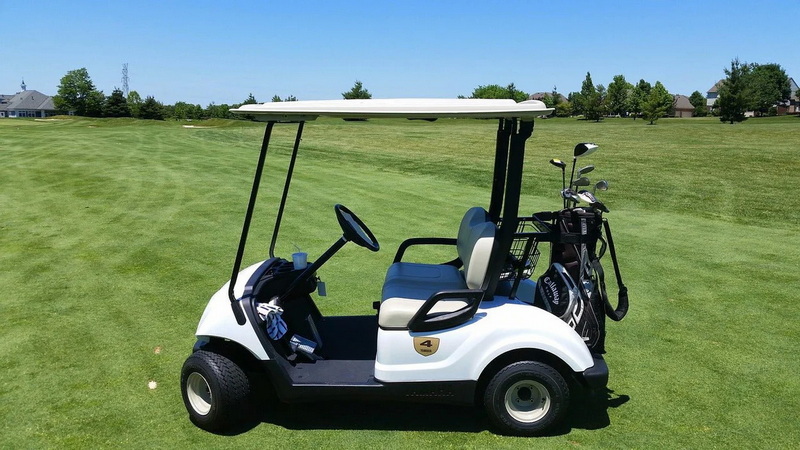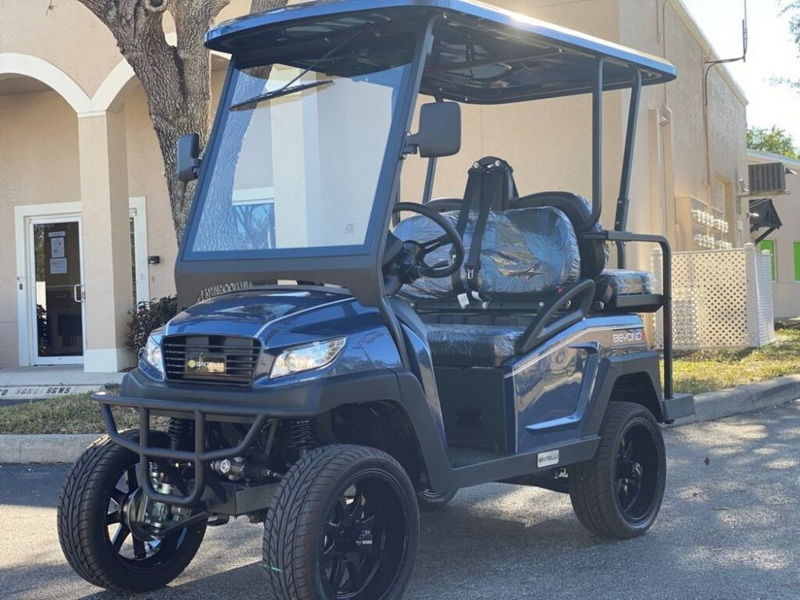Content Menu
● Common Reasons for Slow Electric Golf Carts
>> Battery Health and Charge
>> Motor and Controller Issues
>> Tire Pressure
>> Speed Sensor Issues
>> Forward/Reverse Switch Problems
● Troubleshooting Steps
● Maintenance Tips
● Conclusion
● Related Questions
>> 1. What should I do if my golf cart battery won't charge?
>> 2. How often should I maintain my electric golf cart?
>> 3. Can I upgrade my golf cart's motor for better speed?
>> 4. What is the average lifespan of an electric golf cart battery?
>> 5. How can I improve my electric golf cart's performance?
Electric golf carts are popular for their convenience and ease of use on the golf course or residential areas. However, many users experience slow speeds, which can be frustrating. Understanding the reasons behind a slow electric golf cart is essential for maintaining optimal performance. This article explores the common causes of slow golf carts, how to troubleshoot these issues, and tips for maintaining your cart to ensure it runs smoothly.

Common Reasons for Slow Electric Golf Carts
Battery Health and Charge
One of the most frequent reasons for a slow electric golf cart is battery-related issues. The battery is the heart of your golf cart, providing the necessary power to operate. Over time, batteries can degrade, losing their ability to hold a charge effectively.
- Check Battery Charge: Ensure that your battery is fully charged before use. A partially charged battery will struggle to provide sufficient power, leading to reduced speed.
- Inspect Battery Connections: Corroded or loose connections can impede power flow. Regularly check and clean the terminals to ensure a solid connection.
- Battery Age: Batteries have a limited lifespan. If your batteries are old or frequently underperforming, consider replacing them with new ones.
Motor and Controller Issues
The motor and controller are crucial components in an electric golf cart. The motor converts electrical energy into mechanical energy, while the controller regulates power delivery.
- Motor Malfunction: If you notice strange noises or overheating from the motor, it may be malfunctioning. This can lead to decreased speed and performance.
- Controller Problems: A faulty controller may not deliver adequate power to the motor. Inspect the controller for any signs of damage or wear.
Tire Pressure
Tire pressure is often overlooked but plays a significant role in the performance of your golf cart. Underinflated tires create more rolling resistance, making it harder for your cart to move quickly.
- Check Tire Pressure: Regularly check tire pressure and inflate them to the manufacturer's recommended levels. Properly inflated tires improve speed and efficiency.
Speed Sensor Issues
The speed sensor is responsible for measuring how fast your golf cart is moving and communicating this information to the controller. If the speed sensor malfunctions, it can lead to incorrect readings and reduced speed.
- Inspect Speed Sensor: Check for dirt or mud buildup on the speed sensor that could affect its performance. Also, inspect wiring for any signs of wear or damage.
Forward/Reverse Switch Problems
The forward/reverse switch controls the direction of your golf cart. If this switch malfunctions, it can confuse the system and lead to slow speeds.
- Check Switch Functionality: Ensure that the forward/reverse switch operates correctly without any sticking or malfunctioning parts.

Troubleshooting Steps
If your electric golf cart is running slowly, follow these troubleshooting steps:
1. Check Battery Voltage: Use a digital voltmeter to check battery voltage while operating the cart. You should see readings between 36-48 volts depending on your model.
2. Inspect Motor and Controller: Listen for unusual sounds from the motor and check if the controller is functioning properly.
3. Examine Tire Pressure: Ensure all tires are inflated according to specifications.
4. Test Speed Sensor: Clean and inspect the speed sensor for any obstructions or damage.
5. Evaluate Forward/Reverse Switch: Test the switch's functionality to ensure it's not causing confusion in operation.
Maintenance Tips
To keep your electric golf cart running smoothly, consider these maintenance tips:
- Regular Battery Maintenance: Check water levels in lead-acid batteries regularly and keep terminals clean.
- Routine Inspections: Conduct regular inspections of all components, including wiring, solenoids, and tires.
- Professional Servicing: If you encounter persistent issues, consult a professional technician who specializes in electric golf carts.
Conclusion
Understanding why your electric golf cart may be running slow is crucial for maintaining its performance. By regularly checking battery health, inspecting motors and controllers, ensuring proper tire pressure, and troubleshooting common issues like speed sensors and switches, you can keep your golf cart in top shape. Regular maintenance not only enhances speed but also extends the lifespan of your cart.

Related Questions
1. What should I do if my golf cart battery won't charge?
- Check connections for corrosion or looseness; if issues persist, consider replacing the battery.
2. How often should I maintain my electric golf cart?
- Regular maintenance should be performed at least once every six months or as needed based on usage.
3. Can I upgrade my golf cart's motor for better speed?
- Yes, upgrading to a higher-performance motor can increase speed but ensure compatibility with your existing system.
4. What is the average lifespan of an electric golf cart battery?
- Typically 4 to 6 years depending on usage and maintenance practices.
5. How can I improve my electric golf cart's performance?
- Regular maintenance, proper charging practices, and ensuring all components are functioning correctly can significantly improve performance.










































